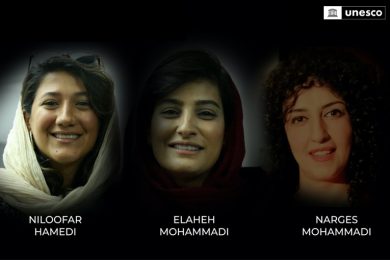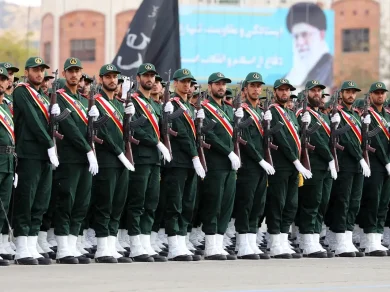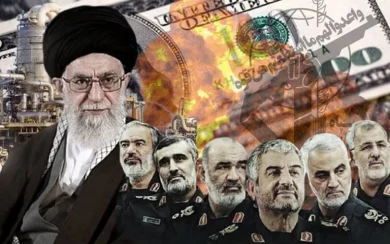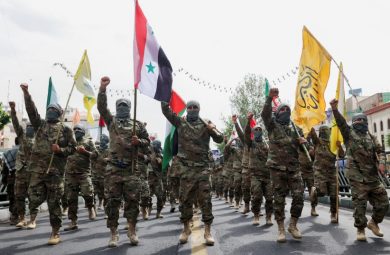In the Islamic Republic of Iran, dissent is a crime. And behind the machinery that turns protest into imprisonment, expression into persecution, and resistance into exile, stands one institution: the Islamic Revolutionary Guard Corps (IRGC).
The IRGC is not simply a military force—it is the enforcer of ideological control, the jailer of civil society, and the architect of fear. Its war on civil society spans street-level crackdowns, targeted assassinations, digital surveillance, psychological torture, and the systemic dismantling of all independent voices—from women’s rights activists and student unions to teachers, artists, and lawyers.
This article explores the IRGC’s war on Iran’s civil society: its methods, targets, evolution, and the consequences not only for Iran, but for the future of democratic resistance globally.
1. What Is Civil Society—and Why Does the IRGC Fear It?
Civil society includes all organized social activity outside of the state and military: unions, NGOs, student groups, media, religious minorities, women’s organizations, and cultural institutions. In most countries, it’s the foundation of democracy and accountability.
In Iran, civil society has long been the most powerful threat to authoritarian rule—a source of moral legitimacy that cannot be controlled by force alone. The IRGC sees it as a battleground for ideological warfare.
2. The IRGC’s Mandate: Ideology Through Suppression
The IRGC was established in 1979 to “guard the revolution.” This means not just defending borders, but also crushing dissent and maintaining the ideological purity of the Islamic Republic.
Core Goals of the IRGC’s Domestic Operations:
• Prevent the rise of alternative power centers (e.g. independent media or unions)
• Eliminate political opposition, especially reformists and secular liberals
• Enforce Islamic social codes (dress, behavior, speech)
• Silence grassroots resistance that threatens regime legitimacy
3. The Crackdown Playbook: How Protest Turns to Prison
The IRGC has developed a systematic approach to dismantling civil society uprisings, especially since the 2009 Green Movement:
Phase 1: Pre-Protest Surveillance
• Monitoring social media and messaging apps
• Identifying organizers, hashtags, and meeting points
• Deploying plainclothes agents and “cyber Basij” to infiltrate groups
Phase 2: On-the-Ground Repression
• Riot police and Basij paramilitaries beat, shoot, and detain protesters
• Use of pellet guns, live ammunition, tear gas, and water cannons
• Drone and CCTV surveillance to identify participants
Phase 3: Arbitrary Detention
• Night raids, mass arrests, or street abductions
• Families denied information about detainee whereabouts
• Torture in IRGC-controlled facilities (e.g., Ward 2-A of Evin Prison)
Phase 4: Coerced Confessions and Sentencing
• Detainees forced to “confess” on state TV
• IRGC intelligence compiles “evidence” from hacked devices or fake charges
• Revolutionary Courts issue harsh sentences: 5, 10, or 15 years—or death
4. Case Studies: IRGC Suppression in Action
A. November 2019 Uprisings
Over 1,500 protesters killed in just a few days. The IRGC cut off internet access to hide the massacre. Detainees reported mass beatings and torture.
“They shot at us as if we were at war. I saw people fall and never get up.”
— Eyewitness, Shiraz
B. 2022–2023 Woman, Life, Freedom Movement
Following Mahsa Amini’s death, women led a nationwide uprising. The IRGC deployed lethal force, used pellet guns to blind protesters, and conducted mass arrests of students, artists, and journalists.
C. Teachers’ and Workers’ Protests
Labor activists demanding fair wages were abducted by IRGC intelligence agents. Many are still imprisoned without trial.
5. Targeting the Pillars of Civil Society
A. Students and Academics
• University sit-ins violently broken up
• Students expelled or arrested for chanting slogans
• Professors purged for opposing regime narratives
B. Women and Feminist Activists
• Women who defy hijab laws arrested by Basij and IRGC agents
• Feminist networks dismantled as “foreign agents”
• Survivors report sexual abuse in custody
C. Journalists and Media Workers
• Independent outlets shut down
• Reporters interrogated by IRGC intelligence
• Photojournalists documenting protests targeted
D. NGOs and Human Rights Defenders
• Organizations forced to shut under threats of prosecution
• Legal advocates arrested under “national security” charges
• Charity workers accused of espionage
6. The Role of the IRGC Intelligence Organization
The IRGC Intelligence Organization (SAS) rivals—and often surpasses—the Ministry of Intelligence in power.
Functions:
• Wiretapping and surveillance
• Interrogation and torture
• Disinformation and defamation campaigns
• Management of “national security” cases in Revolutionary Courts
It has been responsible for detaining dual nationals, fabricating espionage cases, and overseeing forced confessions.
7. IRGC Prisons: Where Civil Society Is Broken
Facilities like Evin, Fashafouyeh, and secret black sites are used to isolate and punish civil society leaders.
Common Conditions:
• Solitary confinement
• Sleep deprivation and mock executions
• Physical abuse and sexual violence
• Denial of medical care
• Psychological torture (threats to family, fake executions)
These prisons are designed not just to punish—but to destroy social trust and deter others from organizing.
8. The Digital Frontline: Surveillance and Cyberwarfare
The IRGC views the internet as a battleground:
• Hacking activists’ phones and cloud accounts
• Deploying spyware through fake apps
• Flooding platforms with pro-regime disinfo
• Targeting women, LGBTQ+ users, and dissidents online
• Using AI facial recognition to identify protesters from photos
The IRGC Cyber Unit collaborates with the state to shut down internet access during protests—effectively isolating civil society in times of crisis.
9. Exile, Assassination, and Hostage-Taking
The IRGC’s war on civil society doesn’t stop at Iran’s borders.
Exiled Activists Face:
• Assassination plots in Turkey, Iraq, and Europe
• Cyberstalking and doxxing
• Family members in Iran harassed or jailed
• IRGC efforts to lure dissidents home under false pretenses
Dual nationals have been used as hostages in geopolitical negotiations—detained arbitrarily under “espionage” charges.
10. The Cost: A Silenced Generation
The IRGC’s war on civil society has created:
• A brain drain of intellectuals, artists, and activists
• Deep trauma among protest survivors and detainees
• A youth population fearful of organizing or even speaking freely
• A digital sphere dominated by fear and surveillance
And yet, resistance continues—underground, in exile, in whispers, and through brave acts of defiance.
11. Global Complicity and Inaction
Despite widespread documentation:
• Many IRGC commanders travel freely
• Few have been sanctioned under Magnitsky laws
• IRGC remains undesignated as a terrorist organization in much of the world
• Western companies have partnered with IRGC-tied entities
This complicity empowers the crackdown.
12. What Must Be Done
A. Designate the IRGC as a Terrorist Organization
• Criminalize support and partnerships
• Freeze IRGC assets globally
• Deny visas and ban IRGC family members from luxury travel and education
B. Support Civil Society in Exile
• Provide funding, platforms, and security to exiled Iranian NGOs, journalists, and artists
• Protect Iranian students abroad from IRGC intimidation
C. Pursue Legal Action
• Use universal jurisdiction to prosecute IRGC officials for torture and war crimes
• Expand Magnitsky-style sanctions on interrogators, judges, and prison administrators
D. Keep Civil Society Visible
• Center the stories of prisoners, survivors, and victims
• Document and archive IRGC crimes for future trials
Conclusion: Civil Society Is the Soul of Freedom
The IRGC understands that civil society—its artists, teachers, workers, mothers, and students—is the beating heart of freedom. That is why it fears it. That is why it wages war on it.
But hearts do not break forever. They remember. They rebuild. They resist.
Join Our Newsletter!
Stay informed with the latest updates, news, and ways to take action in the fight for justice and global security. Sign up now to get updates delivered straight to your inbox!





